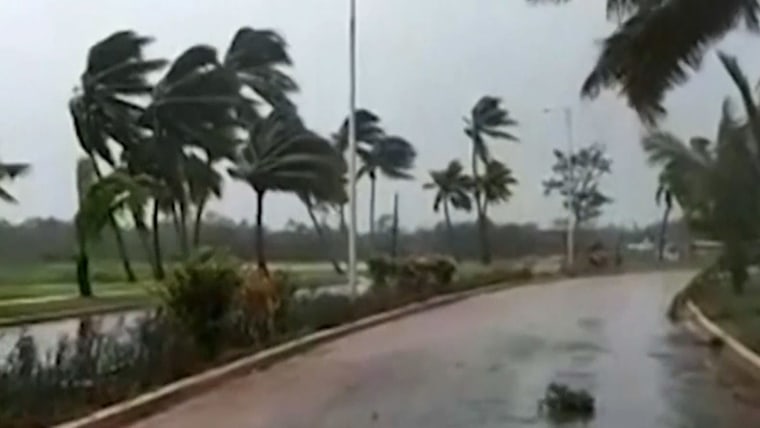Elsa weakened to a tropical storm early Wednesday, hours before it was expected to make landfall on Florida’s north Gulf coast, forecasters said.
Hurricane warnings remain in effect for parts of the west coast of Florida, the National Hurricane Center said.
Elsa could dump as much as 9 inches of rain in some areas and cause flooding, and officials are warning of a possible life-threatening storm surge. Tornadoes were also possible in the northeastern portion of the state.
At 8 a.m. the storm was moving north, almost parallel to the west coast of Florida, with heavy rain and wind spreading inland, according to the National Hurricane Center. The storm was expected to make landfall near Cedar Key in the late morning or early afternoon.
Gov. Ron DeSantis said 26,000 customers were already without power in Hillsborough, Pinellas and Polk counties.
DeSantis warned people not to use generators inside. He said more people had died over the last four years from carbon monoxide poisoning than from direct storm impacts “and we’ve had some significant storms hit our state.”
Officials in Tampa on Tuesday night also urged residents to stay off the roads. “You don’t need to be out, do not go out,” Mayor Jane Castor said earlier Tuesday. “We’re going to have a lot of rain, a lot of wind.”
In New Port Richey, northwest of Tampa, Derek Watkinson put storm shutters on his home Tuesday.
“With Mother Nature, anything can happen,” Watkinson told NBC affiliate WFLA. “So, I’m just going to go with the flow and a ‘better safe than sorry’ kind of thing.”
Elsa is expected to make landfall along the north Florida Gulf coast by late Wednesday morning, the hurricane center said. Early Wednesday, tropical-storm-force winds reached 80 miles from the center, forecasters said.
Hurricane warnings were in effect for a stretch of the west coast from Chassahowitzka to the Steinhatchee River. Storm surge warnings covered the west coast of Florida from the middle of Longboat Key to the Aucilla River, including Tampa Bay.
The storm is forecast to weaken after it moves inland. It will then move into Georgia and North Carolina on its way northeast, according to the hurricane center. Parts of Georgia and South Carolina could see between 2 to 4 inches of rain, with isolated totals of 6 inches.
In addition to the watches and warnings in Florida, a tropical storm warning was in place for the coasts of Georgia and South Carolina, and watches extended to North Carolina.
Georgia Gov. Brian Kemp issued a state of emergency for parts of his state Tuesday to allow for aid, and Florida had declared an emergency ahead of the storm.
Utility company Duke Energy said it had 3,000 personnel staged in western and northern Florida to respond to power outages and crews had been brought in from other states.
Tampa International Airport suspended commercial service at 5 p.m. Tuesday but reopened Wednesday morning. Sarasota recorded a 54 mph gust at its airport Tuesday night, the city said.

Elsa lashed the Florida Keys with tropical-storm-force winds Tuesday. Key West International Airport recorded a gust of almost 60 mph, the National Weather Service said.
The storm was the first hurricane of the Atlantic season, which began June 1 and lasts through November.
Elsa is blamed for the death of one person on St. Lucia and of two in the Dominican Republic, The Associated Press reported.


